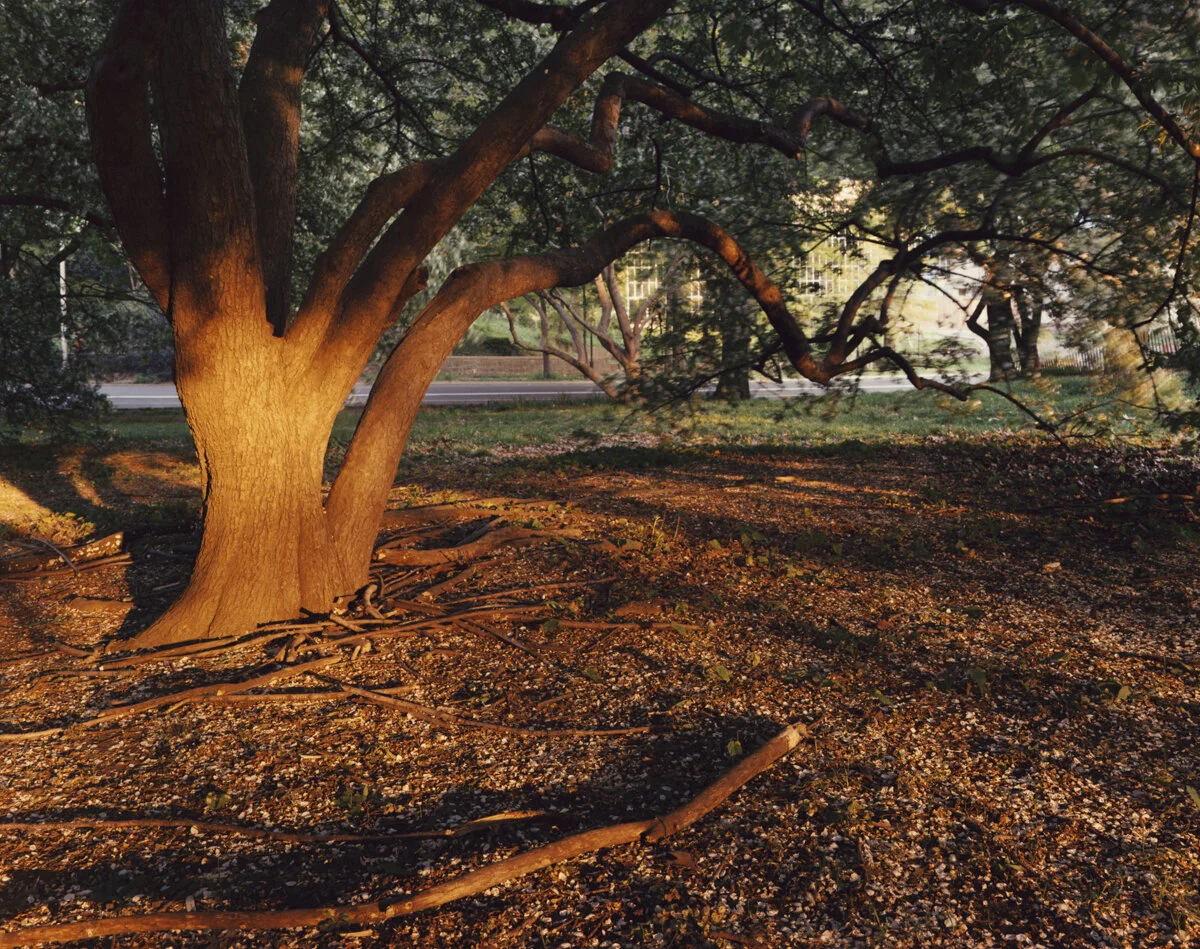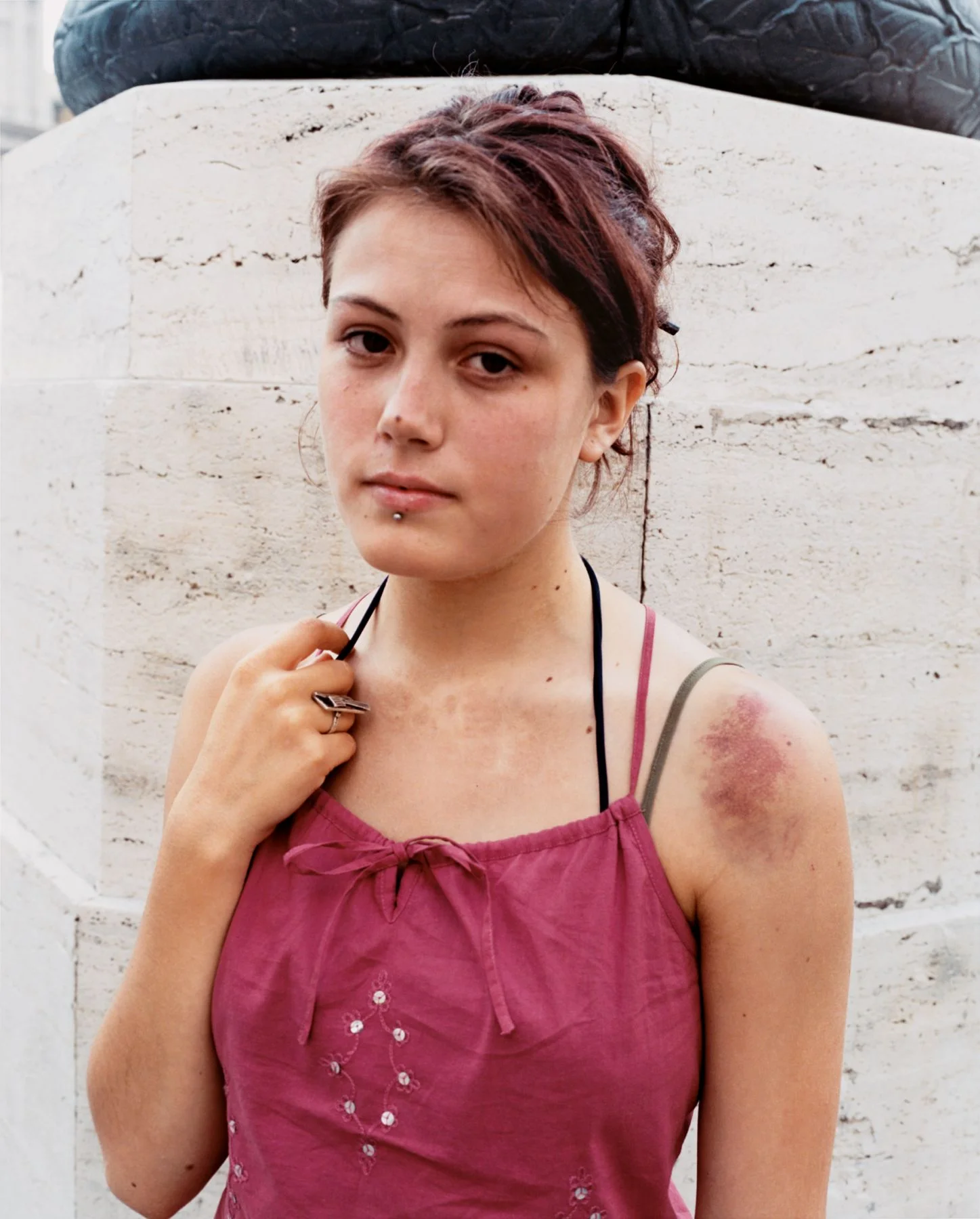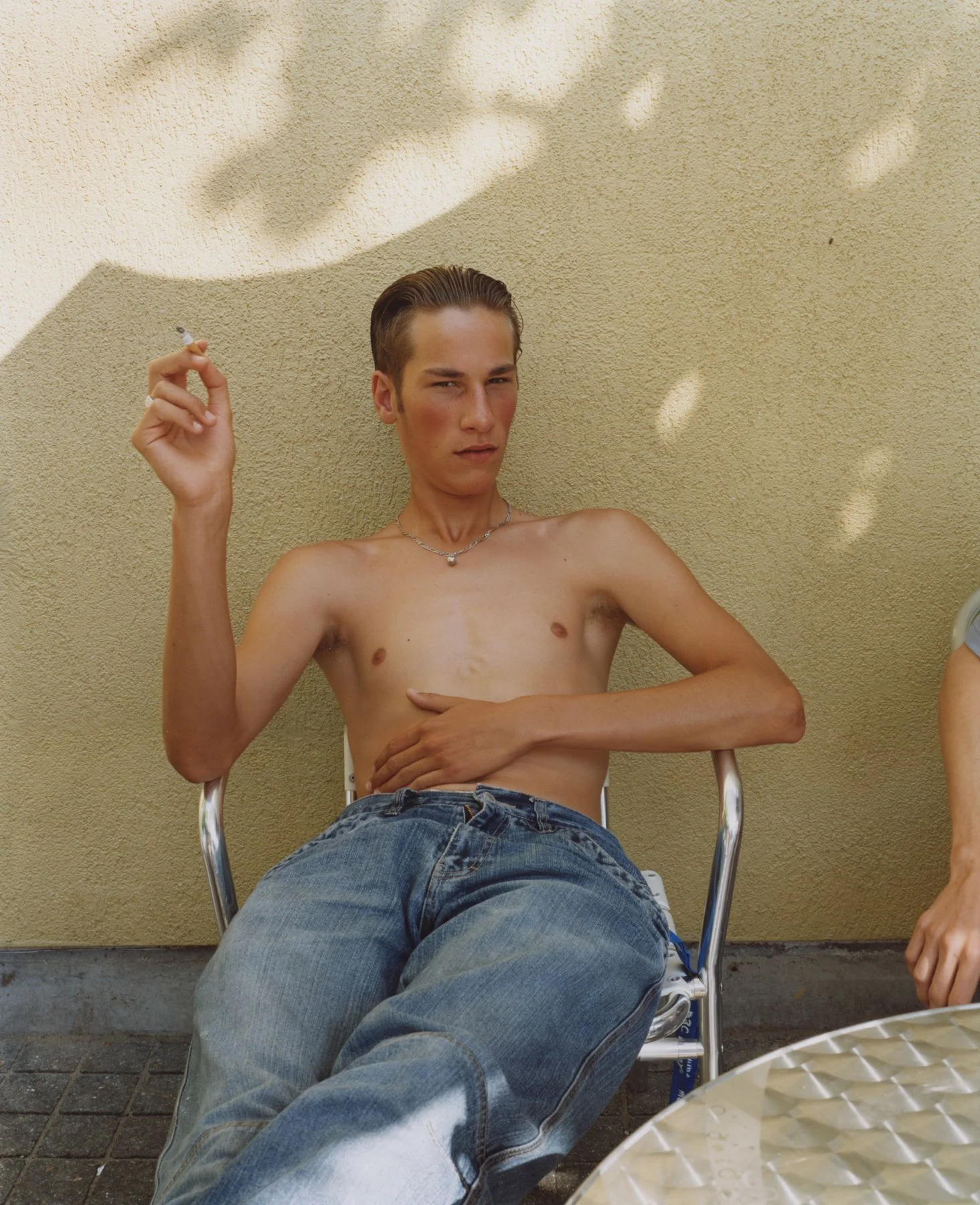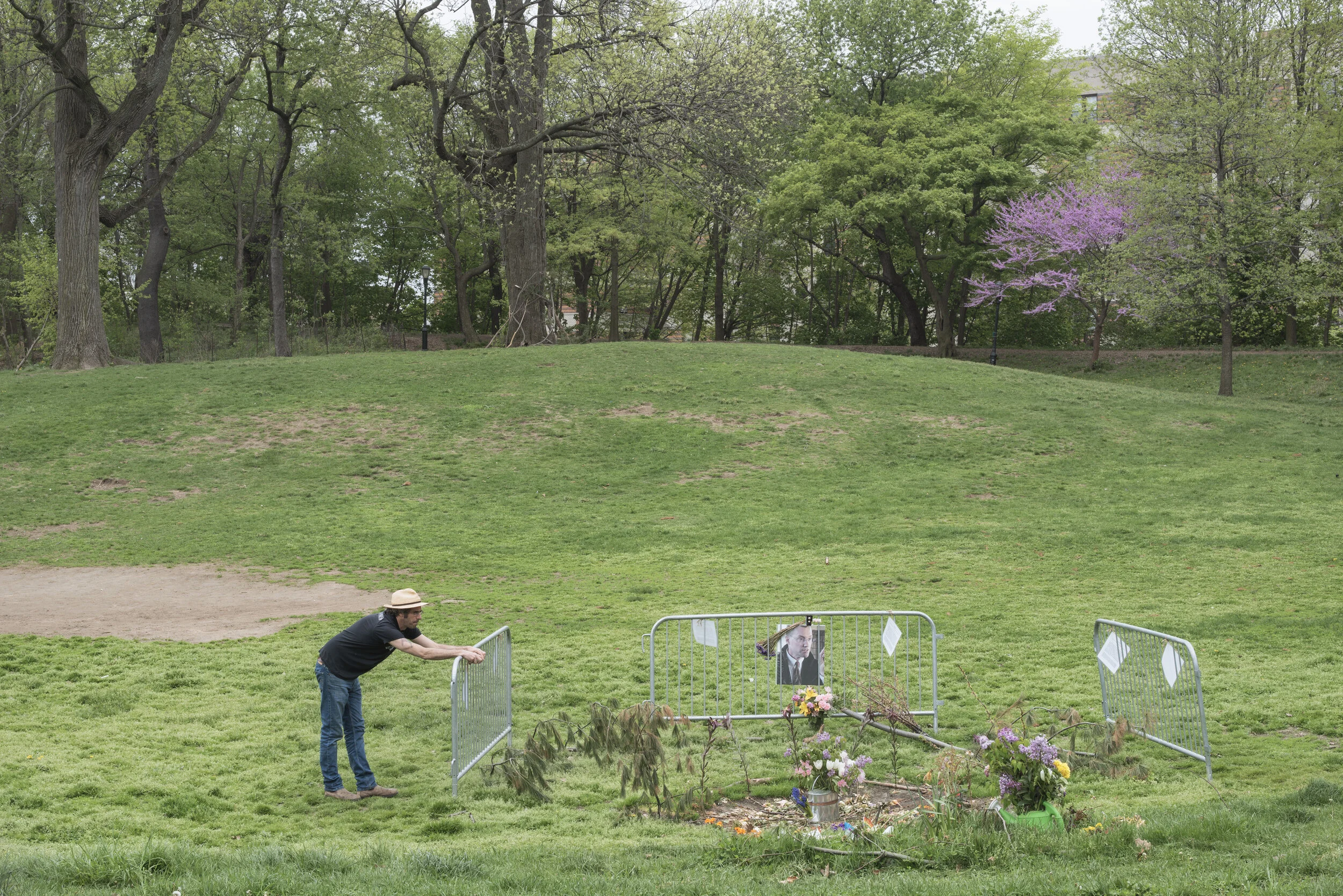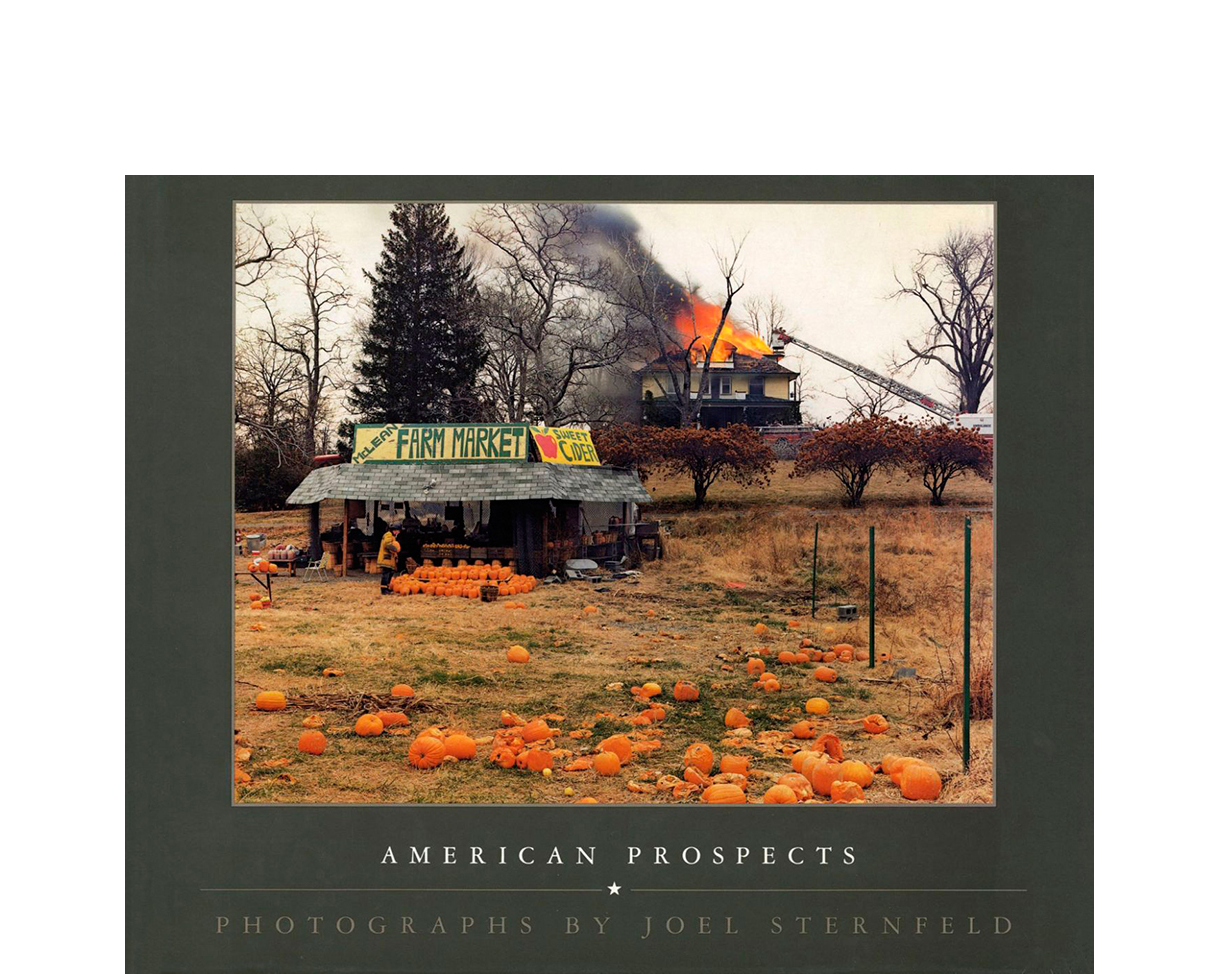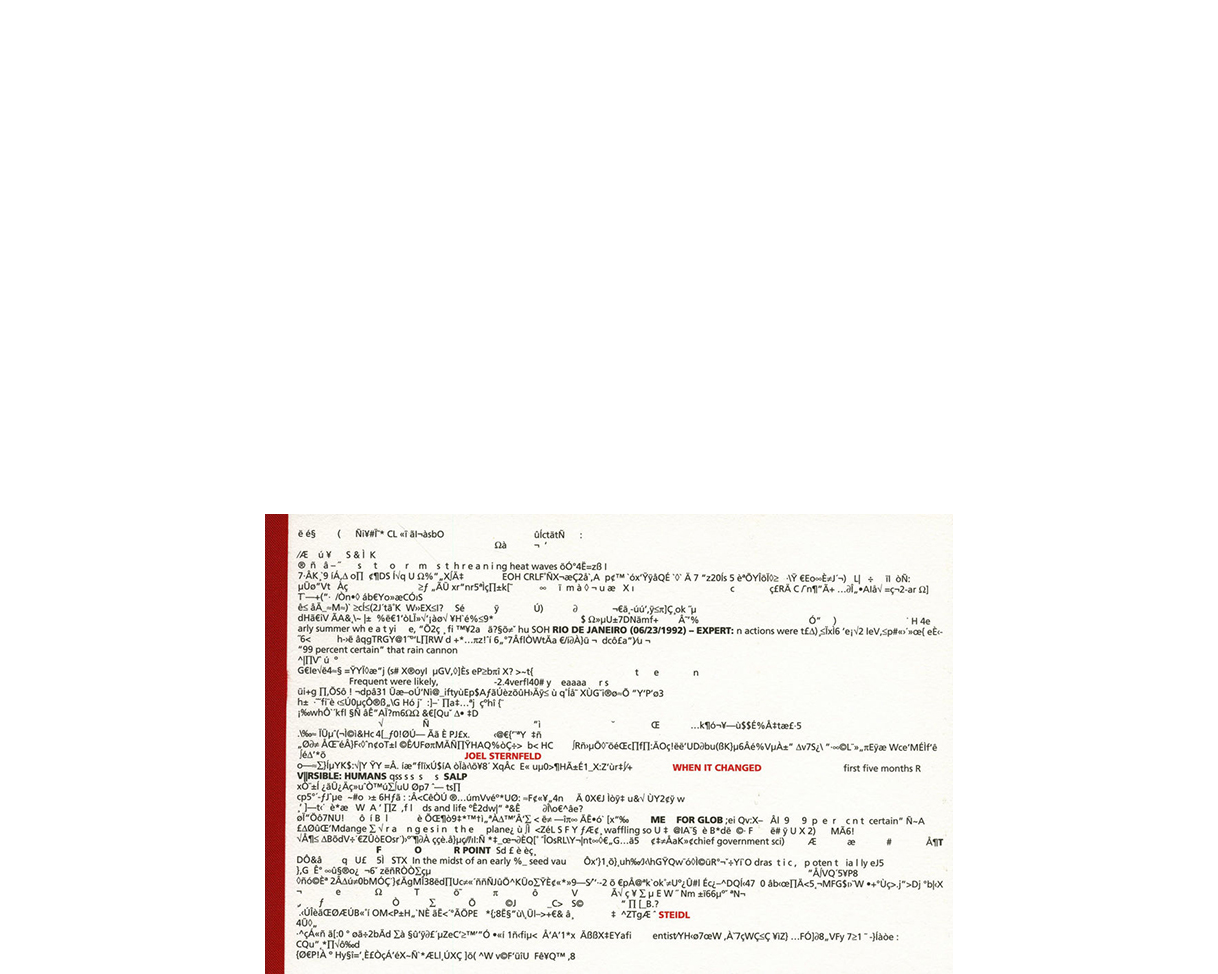Joel Sternfeld’s Early Pictures, by Jessica May
Joel Sternfeld’s Early Pictures
“I greet you at the beginning of a great character, which yet must have had a long foreground somewhere, for such a start.” Ralph Waldo Emerson, 1855 letter to Walt Whitman on the occasion of the publication of “Leaves of Grass”
Joel Sternfeld made the photographs in this book between 1971 and 1980. He exhibited and published select works in the late 1970s and early in the following decade, but to a certain extent these photographs are victims of their own success: they were the basis of Sternfeld’s successful 1978 Guggenheim Award application. He was awarded two Guggenheims in quick succession— the fist in 1978 and another in 1982— which allowed him to work on the nearly decade-long project titled American Prospects. That project culminated in 1987 with a book and exhibition that brought his work to wide public notice. American Prospects has long been understood as a landmark contribution to the history of American photography, but ironically its success eclipsed the photographs in this volume in the public record. They have languished in the studio in the intervening decades while Sternfeld focused on making new work. Between 2009 and the present however, he began looking again at early projects; in that process he rediscovered these photographs, which now look like an achievement more substantive than mere foreground.
Sternfeld did not add color to an aesthetic practice already formed in black and white. Instead, he began his serious work as a photographer by working with color materials. The process of teaching himself how to make use of the medium in the late 1960s demanded both a high level of technical knowledge as well as an approach to organizing a picture that would take color as its core concern rather than piling it onto an existing pictorial practice. In his 1976 essay on William Eggleston, curator John Szarkowski suggested that the challenge facing color photographers was learning to see holistically rather than dividing their sight between what was subject on the one hand and hue on the other. He hinted at the conceptual difficulty of rethinking photographic practice to encompass color-as-subject by noting that it was only in recent years that photographers were guided by the logic that, “The world itself existed in color as though the blue and the sky were one thing.”
Throughout the early years of the decade, Sternfeld sought to establish a palette as well as to stabilize the look of his work. In a recent essay on Stephen Shore, Sternfeld noted the importance of developing an independent palette, writing, “[A] color photographer must choose a palette as painters would choose theirs.” In 1987, Anne W. Tucker wrote of Sternfeld’s color choices as the “somber and pastel ranges.” His preference for delicate, non-primary hues characterizes these earlier photographs as well. His choices were not a function of purely formal interests: over the course of the 1970s, Sternfeld came to believe that every historic period has its own characteristic color scheme and that the 1970s in America would be best represented by such colors, as well as by day-glo colors often associated with the 1960s.
Although the technology of color photography was not new to the marketplace, photographers working with color faced a raft of aesthetic and technical questions that demanded a significant investment of time. In addition to palette, Sternfeld quickly identified another key question that his fellow color photographers would also face— whether to use negative or slide film. Negative film was forgiving and easily printed, but it did not yield the sharpness of a slide film. Although Kodachrome slide film’s narrow exposure latitude demanded a high level of precision, its sharpness and rich color density were desirable and by 1971 he had adopted it definitively.
Sternfeld’s interest in color was established in childhood; his parents, both artists, were acutely sensitive to the strong role fo color in artistic sensibility. He developed a nuanced theoretical understanding of color, in part from a series of publications on color theory by the artist Josef Albers and from an original teaching set of his lithographs that Sternfeld came to own. His sensibility was further informed by museum exhibitions such as an Albers exhibition at the Metropolitan Museum of Art in 1971 and Bauhaus Color at the High Museum of Art in Atlanta in 1976. Sternfeld cites the Bauhaus Color catalogue by art historian Clark V. Poling as particularly influential in providing an intellectual and historical framework for his use of delicate hues balanced in equal density.
As a young color photographer in the 1970s, Sternfeld was in good company, but he did not know this until after 1974, when he began to meet other color photographers. Several important early exceptions to Sternfeld’s sense of isolation stand out— including the presence of Stephen Shore, who exhibited work from his book, American Surfaces, at Light Gallery in 1972, and Helen Levitt, whose color work was exhibited at the Museum of Modern Art in September, 1974 in slide form. Sternfeld also knew the recent history of color photographer, which included the elegant landscapes of Eliot Porter, an expert in the dye imbibition (dye transfer) technique and the expressive, commercially oriented practice of Ernst Haas. Although Sternfeld did not find the examples of Porter’s and Haas’s work useful as models, he sought out Levitt, who had begun working with color slide film on New York City streets in the late 1950s. Her work offered a model for a poetic street practice in which the resulting photographs combined compositional assurance with the appearance of coincidence. Eventually Levitt would become a friend and unofficial mentor to Sternfeld, and they spent time making photographs together.
Sternfeld traveled to New Orleans in the summer of 1974 and made several of the photographs that appear in this book, among them a bar scene that pictured two men sitting at a red table pushed up against a red wall (p. 37). A third man leans on a jukebox that glows with purple light. The photograph dramatizes the play of color, but Sternfeld’s framing of the two men along either side of the photograph suggests a fragmented narrative. The sense of the photograph as a suggestive window onto a moment (or, in Christian Metz’s memorable phrase, a “cut inside the referent”) characterizes many of the photographs in Sternfeld’s early oeuvre. In this book, the idea that the photograph is a vehicle for a powerful but unresolved narrative is at odds with a competing idea about color photography as a vehicle for a rounded narrative statement. Sternfeld wrestled back and forth between these positions, but in the fall of 1974, he achieved some resolution after an important visit to Cambridge to meet William Eggleston, who taught briefly at Harvard. Eggleston was generous: he pulled out “box after box” of unpublished prints. Over the time they spent together, Sternfeld recalls that he came to recognize Eggleston’s absolute mastery of what Sternfeld termed the “poetic snap-shot.” Thus, the question that came to animate Sternfeld’s own practice pushed in the opposite direction—how to make photographs, individual and in sequence, that could speak not words or even phrases, but sentences, paragraphs, stories.
The following summer Sternfeld moved briefly to Nags Head, North Carolina, where he produced the first discrete body of work represented here. (Another group, “Happy Anniversary Sweetie Face!” was begun in 1971, but extended through 1978.) The photographs from Nags Head have the qualities of both tenderness and humor that characterize much of his later work, but the sequence also starts to articulate Sternfeld’s concept of photographic narrative, as well as its object. It uses photographs both individually and in sequence to describe broad narratives of American life and public culture. In this case, the story is that of the beach and of the arc of a summer. Sternfeld’s motivations were not entirely academic: he went to Nags Head in search of what he describes as one oneiric summer. It was his surfer roommate, in fact, who carefully noted the daily surf conditions on a calendar; the photograph suggests picture-making is only one way to record the search for perfection.
The following year, Sternfeld began working on the street portraits amidst the Bicentennial fever of 1976. Sternfeld made them in both New York and Chicago starting the spring and summer and then picked the project up again at the entrance to New York’s Macy’s Herald Square at Christmastime. He remembers the project being driven by the desire to meditate about time as well as to think about the actual population of the nation through deliberately glamour-less portraits, as opposed to the image of celebration and national salubriousness that had become the default mode of Bicentennial nationalism. Sternfeld held to a fairly rigorous process of photographing urban passersby using a manual flash, which tends to highlight the person or people against a darkened background. In most cases, these people are literally passing by and do not acknowledge the camera. Many of the subjects are frankly awkward, their mouths hanging open, hair slightly askew and gazes unfixed. The impression of awkwardness is reinforced by Sternfeld’s framing— the photographs are horizontal, and most of the figures are cut off at the chest, along the should, at the neck, or down the side of the face. Nearly everyone slumps or appears to: poorly cut suits, bodies in motion, and a slightly low camera angle conspire against the impression of upright-ness in nearly every photograph.
Sternfeld acknowledged the open flash effect to the strobe in a short description of the work that was published in Camera magazine in 1977, and described the photographs’ correspondence with what he referred to as “the feeling of malaise characterizing American life in 1976.” The term had more than passing relevance— in 1979, President Carter delivered a summer speech on the energy crisis that has become known as the “malaise” speech. Despite the sobriety of Sternfeld’s description, the photographs again suggest an eye attuned to flashes of humor and oddity that enliven everyday life. In one image, a man waits in line with his arm akimbo, ready to receive his daily newspaper as though it were football being handed off. Another man strides down the street with a ruler pressed against his nose, although whether as a gesture of absent-minded fidgeting or something more purposeful is unclear. Perhaps because of dramatic illumination, in which faces and sometimes other body parts seem to emerge from an inky background, peoples’ features in general, as well as their clothing, seem overly prominent. In his 1977 statement about the series, Sternfeld remarked on the heightened sense of temporality and instantaneity conveyed by the strobe, but in another sense the flash of illumination seems to deconstruct the people pictured, emphasizing their features over and against the entirety of their self-presentation on the city streets. It is as though, despite a morning (or a lifetime) of painstaking self-preparation in front of the mirror, the quick passing motion of the camera and its canny operator have distorted what we subjects regard as the proper balance between our individual features and our overall look.
Sternfeld again explicitly engaged with portraiture in 1980, when he visited a series of malls in New Jersey and asked people to show him what they bought. In contrast to the street photographs, the subjects here acknowledge the camera. They mug. Nearly everyone smiles, a fact so surprising that viewers now tend to reflexively smile back. Unlike most of the people that Sternfeld photographed in the city, the shoppers willfully, seemingly happily present themselves and their modest purchases to the camera. The pleasure of the images emerges in the disconnect between the shoppers and their accoutrements: a body builder holds a small ice cream cone; a man in a business suit holds running shorts at waist height; a young couple look warily at the camera, while the dot-matrix portrait of themselves they have just purchased appears to do the same.
Sternfeld’s series of photographs from his first survey trips in the United States, the longest-running sequence in the volume, is entitled “Happy Anniversary Sweetie Face!” This series provides the most direct precedent for American Prospects. As in the other groupings work, many of the photographs are humorous and strange, often in mutually reinforcing ways. Several modes seems to prevail. In one, color rhymes throughout an image create surprising juxtapositions that tie a photograph together visually and conceptually— for instance, the part that bisects the exposed pink scalp of a candy store clerk matches a little too precisely the pink box of candy at her fingertips. In another, the red outfit of a tennis player echoes not only the red ground of the carpet under his feet but also the bright reflection of the carpet against patterned silver wallpaper. These rhyming patterns of color are principle source of visual pleasure for viewers, but they also serve as a measure of Sternfeld’s emerging perception that, in his words, “In the good or successful color photograph the meaning or the definition of the picture will arise, somehow, through the use of color.”
In several works, Sternfeld captured the image of light passing through fabric or across large swaths of color-filled space, as in arresting photographs of apricots drying on a long wooden table and a lone school desk sunning itself against a pea-green wall. With these, Sternfeld achieved a different kind of color fluency from the visual rhyming I note above; he uses blocks of color to organize space. Sternfeld thus evokes not only Eggleston’s photographs but also Albers’ color theory, which held that passages of color could take on volume through their very adjacency. In most cases, vertical and horizontal lines organize space, and so these photographs are among the calmest works in this volume. They suggest moments of stasis within the swirl of energy that characterizes much of Sternfeld’s early work and begin to establish points of connection—even synthesis—between the evocation of natural beauty and the broad, arching narratives of American culture and everyday life that would become his primary concern in the ensuing decades, particularly in American Prospects.
The photographs in this volume constitute four separate projects, each of which anticipates Sternfeld’s future work, starting with American Prospects and extending to the present. Yet these early pictures function as far more than mere foregrounding to Sternfeld’s later career. While the visual complexity of each of these projects prompts a new evaluation of the timing of Sternfeld’s artistic maturity, the thoroughness of Sternfeld’s early approach to color as a vehicle for the organization of the picture space and the establishment of a narrative promises to deepen our collective understanding the history of color photography. Not incidentally, the pleasure of looking through the photographs here is that they brim with immediacy despite the decades that have passed since they were made. This book is a time capsule.






